Exponent II's Blog, page 95
November 6, 2022
April Young-Bennett, @TheExponent blogger, shares “a pretty fringe position” on #LDS women’s garments @HowStuffWorks.
Read the full article here:
 1879 garment
1879 garmentThe Sacred History of ‘Mormon Underwear’, How Stuff works
By: Dave Roos | Oct 24, 2022
November 5, 2022
LDS Culture, Power Posturing, and Stunted Spiritual Development: The Dangers of Hero-Worshipping our Church Leaders
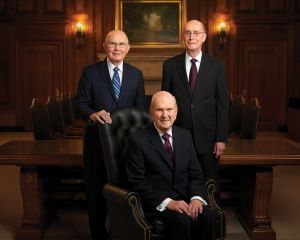 About twenty years ago, I was lucky enough to come into the orbit of the great LDS sociologist Armand Mauss. We were a group of young adults connected to UC Irvine, and we invited him to come to our weekly study group. Those were fantastic years. We loved how he modeled a kind of mature, nuanced discipleship that embraced the fallibility and humanness of our leaders and church institution.
About twenty years ago, I was lucky enough to come into the orbit of the great LDS sociologist Armand Mauss. We were a group of young adults connected to UC Irvine, and we invited him to come to our weekly study group. Those were fantastic years. We loved how he modeled a kind of mature, nuanced discipleship that embraced the fallibility and humanness of our leaders and church institution.
Mauss mentioned a number of times how different contemporary church discourse is compared to discourse when he was growing up. “When I was young, there was only one prophet. And that was Joseph Smith. You almost never heard the president of the church referred to as the prophet,” he told us. In my recollection, Mauss found the newer trend toward emphasizing the prophet status of church presidents slightly distasteful, as he pointed to the last verse and chorus of the rather creepy Primary song “Follow the Prophet” as a manifestation of this newer trend.
A recent post by Christian Anderson and Quentin Spencer pointed out that this trend of emphasizing prophetic authority seems to be increasing under President Nelson. More and more General Conference speakers refer to President Nelson and his prophetic mantle, quote him, thank him for his beloved prophetic leadership, etc. This is a troubling trend. As Jana Riess says in her terrific article on the LDS church and celebrity culture, “When [General Conference] speakers mention the current leader’s name as often as the Savior’s, it’s no longer clear just who it is we’re supposed to be worshipping.” Another friend pointed out that these rounds of very public deference and loyalty to President Nelson reminded her of President Trump’s bizarre first meeting with his cabinet, where every member took his/her turn to fulsomely praise Trump.
I want to delve more into this dynamic we’ve developed in the church to emphasize prophetic authority, hero-worship our highest leaders, tout that the prophet is the mouthpiece of God, and basically treat our highest leaders as infallible. These trends are often modeled by top leaders and then trickle down to regular members on the ground. Some might see good result from these trends — having a human, living exemplar of Christ-like behavior is no doubt inspiring to some. This language can also help to create a unified church culture. But I think it’s worth pointing out that there are some dangers to this trend (in addition to those mentioned above).
First, this kind of rhetoric is often a part of spiritually abusive systems. In a recent series of episodes of the Latter Day Struggles podcast, Valerie Hamaker points out that, according to this book, one aspect of a spiritually abusive system is the pervasiveness of something called power posturing. Power posturing occurs when leaders “spend a lot of time focusing on their own authority and reminding others of it as well.” As Hamaker says, the job of a spiritual leader is not to point to himself (or to each other within the power system) as authorities. Rather, the job of a spiritual leader is to point to God, Jesus (if Christian), and loving, just principles. If church leaders are continually orienting their listeners to themselves (or to those in their power circle) and to their own authority, be wary, the authors say. Hamaker points out LDS church discourse definitely includes overt power posturing.
Second, the repeated emphasis on obedience to church leaders (and the LDS cultural tendency to hero-worship them) can create in members an unhealthy dependence on leaders. We need to be careful about discourse that encourages members to outsource their own spiritual authority, as they seek permission from leaders to make decisions about the minutiae of their lives.
I remember being in a feminist Facebook group years ago where a woman posted that she had asked her bishop if she could take off her garment bottoms for the days of the month she was on her period because she was constantly staining her garments. The bishop responded that rather than taking off her garments, she should wear adult diapers underneath them. The woman was outraged by this response. I was outraged – well maybe not outraged, but just distressed – that this woman had been taught to outsource her spiritual authority like this, that she felt she needed to go to a fallible church leader and ask for his permission for something so personal.
We have infantilized, damaged, and diminished our people and their development when we have taught adults to outsource moral responsibility and decision making to others. Rhetoric pointing us to obedience to leaders who always “know the way,” as the Primary song goes, can discourage members from discerning for themselves how to live into their own integrity and how to move forward amidst complicating factors. Not that we can’t borrow wisdom from church leaders–some no doubt have insightful things to say on certain subjects. But ultimately, we need to be empowered to weigh out our options using good principles and make complicated decisions ourselves.
Third, emphases on prophetic authority and “the prophet is a mouthpiece for God“ language also can set members up to crash and burn when they realize how fallible their leaders are. Inevitably, members with access to the internet who know English will at some point come to learn some of the terribly racist things Brigham Young said. They’ll find out Joseph Smith married a 14-year-old. They’ll find out that our current church leaders have socked away billions of dollars of tithing money in escrow accounts rather than using that money to feed the hungry, clothe the naked, and do all sorts of good with it. If we have held leaders up as mouthpieces for God who can “never lead the church astray” we’ve created a binary of either the church is true or it isn’t true. Many people therefore choose to disaffiliate, feeling that if prophets actually did make all these mistakes, then the church must not be true. We could save our people from some significant pain and disillusionment if our rhetoric included an emphasis on the humanity and fallibility of our leaders and church institution, alongside a pervasive rhetorical emphasis pointing to God and Jesus.
There’s something seductive about the possibility of prophet speaking for God who could never make a mistake in his capacity as president of the church. It’s so clean and simple to forego having to make complicated moral determinations because “once the brethren have spoken, the thinking has already been done” (as the old Mormon saying goes). Such emphases on authority also no doubt make leading easier for church authorities throughout the hierarchy. But the costs of such discourse are not inconsequential. Do we really want a spiritually stunted people, unable to discern for themselves good and right ways forward? Do we really want people to outsource moral responsibility to fallible leaders? The principle of integrity (to our best selves, to gospel principles, to our moral consciences) should always trump the principle of obedience (to human leaders). Our church and its people would be overwhelmingly better off if there was space within the institutional church to disagree with leaders and reject their worst ideas and actions. If one can reject the worst of the tradition, room is left to embrace the best of it.
November 3, 2022
Things I wish I knew before my 11 year old girls became “Young Women”

Photo by Sam Manns on Unsplash
My twin daughters turned 12 years old at the end of October. Under the previous way of doing things in the Youth program this would be their first week in the Young Women organization. Instead, they’ve been participating in Young Women since the beginning of the year.
These last ten months of being a parent to 11 year old “Young Women” have been full of realizations.
I had no idea what to expect from the Young Women organization in 2022. The last time I attended anything to do with Young Women was almost 20 years ago when I was 18. I’ve never served in Young Women as an adult. Aside from hearing about the theme change and a simplified camp manual I really haven’t paid attention to what is going on in the Young Women program.
I want to share eight things that I wish I knew before my 11 year old girls entered the Young Women organization. I’m hoping that sharing these things will help future parents of 11 year old girls help their daughters have a smoother transition from Primary. I’m also hoping that a few Young Women Presidencies might find these things helpful as they figure out how to meet the needs of their youngest participants.
1. The Temple and Priesthood Preview was light on the details. My daughters and I attended the “Temple and Priesthood Preview” put on by our ward last December. It was a nice event where the Deacon’s Quorum President and the President of the youngest Young Women class each talked about what they liked about the youth program. The leaders spoke a little bit and welcomed the new youth. I think the leaders and youth who spoke at that event did a good job of getting my girls interested. But they completely missed the ball on helping me transition to being a parent of youth.
It would have been nice to have a handout explaining things like what night of the week the youth activity took place, which Sundays would be spent in Young Women vs Sunday School, or when to expect combined youth activities. It would have been helpful if the leaders had explained what the drop off/pickup policies were. (When I attended Young Women the leaders always gave us rides home, but I guess that’s a no-no now unless it’s pre-arranged.) I would have also appreciated a list of activities to expect throughout the year.
2. The inequality started the first Sunday. I knew that my girls would not pass the sacrament. I was prepared for that disappointment. What I didn’t know was that the young women in the ward would be completely overlooked. The bishop beamed with pride as he announced the names of each of the new Deacons, Teachers, and Priests. Each boy stood up when his name was called. When the bishop was done announcing the boys’ names I thought, “Now he will announce the names of the new young women and the ones who have moved up a class.” I even told my girls to be ready to stand up when he said their names. But the bishop was done.
I was a little shocked. I whispered, “well maybe he’ll recognize you next week.” But weeks went by and the girls were never recognized as moving out of Primary and into the Youth Program. When I finally asked the bishop about it he said, “Oh the handbook doesn’t allow things like that to be recognized anymore.” So not only are our girls no longer spotlighted for even a second of Sacrament meeting. They have to watch their male peers get the only attention that the handbook allows.
3. Eleven year old girls are not teenagers. In most of the United States 11 year olds are in 5th grade which is in elementary school. In some areas 5th grade is the oldest grade in the school while in other areas 6th grade will also be in elementary school. Either way, there is a BIG difference between elementary school children and middle school children. In elementary school the children are still walking in single file lines around the school. They spend the majority of the day with the same group of kids in one classroom with one teacher. They are accustomed to having simple directions given and then explained.
What I saw happening in my ward was that the 11 year old girls were just tossed into the mix with the older girls and expected to figure out the social structure and unspoken rules of the group. Maybe that would have worked if my girls had an older sister to explain things. But my girls had no one. They are the oldest in our family. Their best friends are non-members. My daughters don’t even have older female cousins to hang out with. They were literal children trying to interact with more mature girls. The older girls were never mean, but they didn’t go out of their way to make these “little kids” feel part of the group.
My girls weren’t really interested in acting more mature to fit in with the older girls either. During one activity in January they made vision boards for the year. One daughter filled hers with pictures of cupcakes she cut out of a magazine. She put down that her goal was to own a dragon. My other daughter listed “Buy a toy Barbie car” as one of her goals.
4. Communication with parents is abysmal. At the beginning of the year I was completely shocked at how poorly the adult leaders communicated with me. My girls were still young enough that I was used to getting information about upcoming events and relaying it to my children. But in the youth program my children were expected to relay information to me about upcoming events. This did not go well.
In January of this year my daughters came home and told me, “Mom, there’s a ski activity.” All they knew was there was a ski activity. They didn’t know the date, the time, the location, if there was a cost, or if we were required to rent gear. I kept waiting for an adult to contact me with information about the activity. It wasn’t until the Sunday before the activity that there was a special “Parents Meeting” for 10 minutes after church. By that time we’d already made plans for the day of the activity.
After we missed the ski activity I asked, “Is there a newsletter that I’m missing?” The response was, “Oh that’s a good idea.” So the Young Women Secretary started creating a monthly calendar. The calendar helped, but I can’t tell you how many times I am texted on the day of an activity with the details of what the girls will be doing that night.
I’m sort of okay with the last minute nature of the communication about “regular” activities. But even the bigger activities with more logistics have few details communicated to me. In the summer there was a boating trip where I was never told whose boat the youth would be riding on. When we attended the Girls Camp Kick Off I had to pull information out of giggly teenage Youth Camp Leaders in order to get information about locations and dates.
I’ve learned that if I want information about upcoming activities I have to go out of my way to contact the leaders and ask for the information. They will very rarely give me the information up front or ahead of time.
5. It’s okay to skip activities that don’t interest your children. At first I had the policy of encouraging my daughters to attend every activity. But over time I’ve realized that a lot of the activities seem to be geared toward 13-17 year old teenagers. Maybe my daughters will like those activities when they are older, but for now I’ve realized it’s okay to skip out on the activities that don’t interest them.
For example, there was one activity where all the youth learned how to line dance. I told the girls they had to try for at least 20 minutes. But my girls just couldn’t get into the activity. And why should they? They were in 5th grade. They didn’t attend Middle School Dances yet. Line dancing was a completely foreign concept.
Another time, at a Stake Activity, the youth were able to choose from a list of ten different presentations. The list included topics like dating, sibling relationships, goal setting, and “Modesty: It’s not just about skirt lengths” (I was very interested in that last one.) My girls listened to the description of each presentation and decided that none of them interested them. We left and went shopping instead.
6. Pay attention to age group dynamics at combined activities. Youth that turn 18 during their Senior Year of high school are allowed to stay in the Youth program until they graduate. That means that 18 year old men can attend combined youth activities with my 11 year old girls. This concerns me a lot. Leaders are responsible for keeping the youth safe and are vigilant about having two deep leadership. But are leaders trained to watch out for grooming behavior among the youth? Do young girls know that the “cute” older boy who is really interested in them is not someone they should trust? From my perspective no one is worrying about these things.
I was especially troubled by a Stake Service Activity for all youth ages 11 to 18. As a parent I was expected to drop my 11 year old girls off at the Stake Center and leave them with adult leaders neither they nor I had ever met. Those leaders would sort the youth into groups. The groups would then travel in cars to other locations to do service like yard work. On paper this sounded like a great idea. I even planned something like this for a Youth Conference when I was 15. But as a parent in 2022 this set off all sorts of alarm bells. Who would be in my girls’ group? Who was going to be driving the car? What location would my girls be serving in? I ended up keeping my daughters home from this activity because I was so troubled at the idea of my 11 year old children interacting with older teenagers at a second location.
7. I have no clue what is being taught in class. I wrote most of this post before I realized I didn’t say anything about the Sunday classes. That’s because I know absolutely NOTHING about what is going on in those classes. When I ask my daughters about class they’ll give me brief answers like, “We talked about missions” with absolutely no follow up.
I always imagined that we’d have deep conversations about what they are learning in Young Women. I’d be able to guide them through what they are learning at church and whether it matches up with our family values. But I’m receiving so little information that it’s hard to have the type of conversations I imagined. It’s disconcerting to realize that I don’t have a clue about what my girls are being told about things like gender roles, sex, modesty, mission expectations, or even the role of the atonement. I try to have conversations about these things anyway so they can at least hear my perspective.
I considered sitting in on a few Young Women lessons. When I asked my daughters’ about that they said they would rather I don’t come. So for now I’m in the dark.
8. The leaders are doing the best they can. For the first 9 months of the year I was very frustrated with the adult leaders in the Young Women organization. I kept thinking things like, “Why aren’t they better at their jobs?” or “Why can’t they just get it together and plan things more in advance?” But in September I had a change of heart. I realized these women are volunteers for this organization. They are busy with their own children, their real jobs, and the hobbies that interest them. They are doing the best they can.
I realized that we are on the same team. We are trying to create meaningful experiences that will help these young women as they grow up. I texted the Ward Young Women President and let her know that I’m willing to help with whatever she needs. This attitude is still in it’s infancy so we haven’t come up with any ideas for how I can help, but we’ll get there.
* * *
Those are the things I’ve learned over the last 10 months as a new parent of girls in the Young Women organization. I realize this list might sound a little depressing. I want to assure you that overall the Young Women organization has been a positive influence in my daughters’ lives this year. Their leaders really care about them. Many activities have been very enjoyable. Girls camp was excellent. My girls are making friends with other girls their age as well as some of the older girls. They like the opportunity to go to combined activities and interact with boys their age.
And to be fair, I’m not sure anyone knew what to do for the 11 year old age group in Young Women in 2022. The new Children and Youth program was rolled out at the end of 2019 and went into effect in January of 2020. COVID-19 started shutting things down shortly thereafter so there wasn’t much time for leaders to fine tune their approach to this new program or to figure out how to best meet the needs of the new 11 year old Young Women. Things gradually started returning to normal throughout 2021, but I doubt anyone gave much thought to the youngest girls in the program.
I’m hoping this list helps you consider how to help the 11 year old girls in your life transition out of Primary and into the Young Women organization.
Did you have any unexpected realizations when your children entered the youth program? What has your ward done to help 11 year old girls transition into the Young Women organization?
November 2, 2022
Interview with Rachel Rueckert, Author of East Winds
 You know when you read a book and relate to it? You relate in a way that makes you ponder, maybe even confront your own ideas, your own memories, your own biases, all the while entertaining you so much that hours pass without your notice. That was East Winds: A Global Quest to Reckon with Marriage for me. I was only too happy to spend some time with Rachel, asking her some of my questions about her beautiful work and words. Please enjoy!
You know when you read a book and relate to it? You relate in a way that makes you ponder, maybe even confront your own ideas, your own memories, your own biases, all the while entertaining you so much that hours pass without your notice. That was East Winds: A Global Quest to Reckon with Marriage for me. I was only too happy to spend some time with Rachel, asking her some of my questions about her beautiful work and words. Please enjoy!
We know that you are the Editor of the Exponent Magazine , but in the book we learn that you started out in anthropology (so cool!). This blend of anthro and word magic comes through in the book for me as a reader, but how do writing and anthropology relate to you in your writing?
As an English and anthropology student at BYU, I saw a glaring divide. Ethnography was dense and only read in academia, and I found lots of travel writing exploitative and shallow. In college, I had a goal of being able to write something different from those models presented. There is no way I would have the skills or courage to research what I did in East Winds without my anthropology training and field work experience. I feel like my English major taught me how to think, and my anthropology degree taught me how to listen.
What or who inspired you to turn this experience into a book?
While I can point to specific inspiration for other writing projects I’ve done, East Winds didn’t have one. I had to understand this aspect of my life that had become so all-consuming, terrifying, with such a strong-hold over how I saw and lived my life. I had to untangle this knot, and there were no other books I saw out there that looked like my experience. So I wrote. I wrote to make sense of my life; I wrote because I had to.
In a recent interview I did with AML, I said, “Rather than being struck by the lightning of an idea (to use that familiar metaphor), it felt like lightning was already inside me, crackling from within, white-hot and burning to escape and be seen and studied and witnessed and understood by me, its host.” That is really what it felt like! In many ways, I feel like I have been writing East Winds my whole life.
You discuss so many personal things as you unravel and discover what marriage is to you. How did you gain the confidence to do this?
 Honestly, I’m not sure I realized how bold this was when I was drafting, just writing because I felt compelled. I guess, working on this for almost eight years, I feel I’ve worked too hard to bow out now. But wow. It is vulnerable. I hope that, not having audience and the fear of what people would think of me while drafting, makes it even more honest and true.
Honestly, I’m not sure I realized how bold this was when I was drafting, just writing because I felt compelled. I guess, working on this for almost eight years, I feel I’ve worked too hard to bow out now. But wow. It is vulnerable. I hope that, not having audience and the fear of what people would think of me while drafting, makes it even more honest and true.
In consideration of modern marriage, Mormon marriage and so on- how might this book appeal to gay couples? How might it appeal to single Mormons?
The book isn’t so much about marriage as it is about learning how to abandon other people’s expectations of what it means to be “good” as I learned to embrace agency over my own life. Because this is a memoir, it focuses on my personal experience. But I do think that questioning simple stories about partnership in Mormonism, normalizing ambivalence and doubt, and making space for people to own their personal choices and trust themselves—despite the pressures and scripted models—can feel universal.
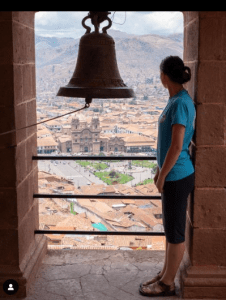
I think it allowed me to see everything a bit more clearly and humanize them more at the same time. By letting their stories be their stories, and their blind spots their own blind spots, I was able to separate myself and my own life a little more—give up some of those notions of being “doomed” and so forth. Romantic partnership is one of the most personal, individual things. It’s impossible for anyone outside that partnership to really know what it is or what it is not on the outside.
A bishop told me once that the most work he did in counselling, or referring women to counselling, stemmed from women’s relationships with their mothers. (I think it surprised him). But I see even in my own life that the cultural expectations of women—especially married women today are vastly different from those of my mother. What advice do you have for women struggling with the progression of women within marriage?
Such an interesting observation! Guilty as charged in my case. My book is as much a love letter to my mother, trying to understand her and our very complicated relationship, as much as anything.
I am not sure I have advice on that second question. One of the themes of my book, I hope, is the absurdity that is “advice” and my own, young quest for it—because that signaled that I was still looking for external validation and guidance when where I really needed to look was within. I don’t know if others relate (though I suspect they do), but encouraging women to trust themselves more would be marvelous.
What future books can we expect from you? (because I loved this book!)
That’s so kind of you to say. I have a historical novel tentatively titled If the Tide Turns out on submission with my agent right now. I’ll be excited to share good news soon, I hope.

In terms of nonfiction, I have lots of projects stewing. I was writing a book about the climate crisis in Utah, but I had to take a break when it made me scary-level depressed. I also want to write a spiritual memoir (East Winds is not that), maybe a collection of essays, an exploration/interrogation of mental health among women in my family, and a memoir about becoming the legal guardian of my mother when I was in my twenties.
Rachel’s memoir, East Winds, can be ordered from anywhere that sells books. Learn more here: https://rachelrueckert.com/eastwinds
Did Brigham Young Disband the Relief Society in 1845? I Don’t Think So
I first presented my argument challenging the claim that Brigham Young disbanded the Relief Society at the Mormon History Association conference in 2021. I further discussed the Shadow Succession Crisis at the Mormon History Association conference in 2022. This blog post focuses on what brought me to the research topic and introduces the themes of my research. I hope to publish a more detailed article soon. For more on this argument, you can hear me discuss the topic with Lindsay Hansen Park and Bryan Buchanan on the Sunstone Mormon History Podcast in a bonus episode that was released this week.
Did Brigham Young disband the Relief Society in 1845? I used to think so, but not anymore.
In March of 2020, a week or so before everything shut down due to COVID-19, my ward held a Relief Society birthday dinner with the theme of Utah women’s suffrage. We decorated the gym with poster-size illustrations of Utah women suffragists and activists illustrated by artist Brooke Smart for the Better Days 2020 campaign. I spoke at the event, giving some context for the resurgence of the Relief Society in Utah in the late 1860s and the Relief Society and Utah women’s involvement in the suffrage movement.[1] I repeated the claim I was then convinced of—Brigham Young disbanded the Relief Society in Nauvoo in 1845. I’d encountered the claim in several history books, news articles, and podcasts. I didn’t question the idea until a few months later.

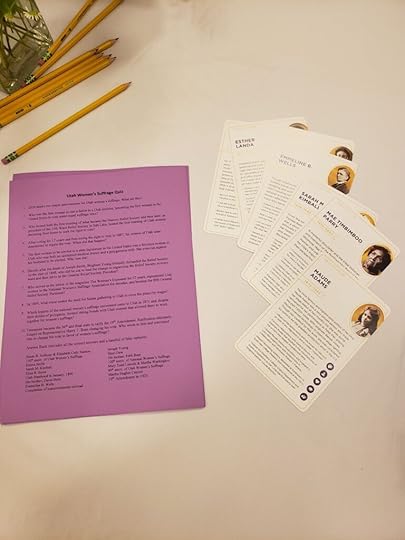
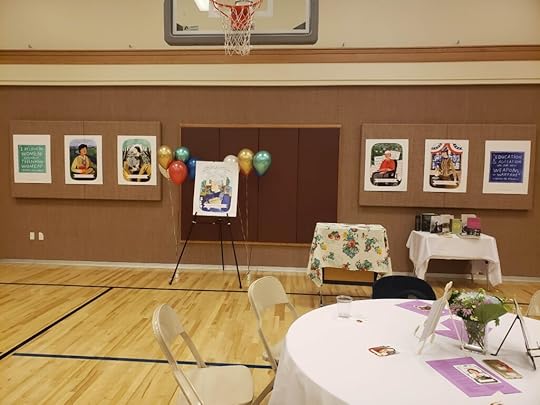
When I was suddenly thrown into pandemic homeschooling, I stopped all of my research and writing for a while. Eventually, I felt able to get back to work in the hours after my kids went to bed. For a project I was then researching, I read through a copy of the 1931 Handbook of the Relief Society. Section 1 of the book is a “Brief History of National Woman’s Relief Society.” It claims that the Relief Society is the “oldest woman’s organization in the United States that has continuously persisted” (15). I thought that was bold given that they were shut down in 1845. A bit later, it touched on the final meetings in Nauvoo: “[The March 9 and March 16, 1844] meetings were the last meetings held in Nauvoo, the work being interrupted on account of the martyrdom of the Prophet Joseph Smith and his brother Hyrum, which occurred June 27, 1844” (25). I thought it was odd that Brigham Young was not mentioned as the reason why the women stopped meeting. This handbook got me curious—where did the idea come from that Young disbanded the Relief Society? I began tracing the claim.
What I found was that it wasn’t until the mid-1980s that historians began claiming that Young disbanded the Relief Society. Earlier sources identified the conflicts in Nauvoo leading up to and after the martyrdoms as the reason the Relief Society paused in 1844. But as part of the growing body of professionalized Mormon history of the 1980s, scholars began grappling with the end of Relief Society meetings. Some scholars began interpreting Young’s words at a March 9, 1845 meeting with the Seventies as part of the larger context for the cessation of formal Relief Society meetings, and over time, scholars identified his words as the reason the women stopped meeting as an ecclesiastical organization.
So what did he say? On March 9, 1845, nine months after the murder of Joseph Smith, Young preached to an assembly of High Priests in the Masonic Hall and later that day to a meeting of a Seventies Quorum in the Seventies Hall. In both meetings, minutes record Young declaring his opposition to the Female Relief Society. To the Seventies he said, “When I want Sisters or the Wives of the members of this church to get up Relief Society I will summon them to my aid but until that time let them stay at home & if you see Females huddling together veto the concern.”[2] The High Priest minutes became available to researchers in 2010 and serve as a second source for Young’s attitude: “I say I will curse every man that lets his wife or daughters meet again—until I tell them—What are relief societies for? To relieve us of our best men—They relieved us of Joseph and Hyrum.”[3] With such deliciously incendiary language, it is no wonder that Young’s words became a popular source for the now nearly ubiquitous claim inside Mormon Studies that Brigham Young disbanded the Relief Society in Nauvoo.
But as I dug further, I found that there was no contemporary evidence that any of the women in Nauvoo heard what Young said in these all-male meetings or that they changed their actions accordingly. The final meetings of the Relief Society were held a full year before Young’s statements. When Emma called the women to order for what became the final four meetings of the Female Relief Society of Nauvoo in March of 1844, “correcting the morals” of the women and denouncing the “spiritual wife system” was the central focus of those meetings. Those meetings were likely uncomfortable as dozens of Relief Society women were already secretly plural wives to Joseph Smith or other men in Joseph’s inner circle. Emma ended the meetings saying they would meet again when an appropriate place could be secured, but they never did meet again.[4] Conditions in Nauvoo became increasingly complicated in the three months leading up to the murders of Joseph and Hyrum at Carthage Jail; Joseph’s death left Emma a pregnant widow with four children to care for and her family finances intertwined with church finances.
There is no record suggesting that Emma or any of her counselors attempted to call another meeting of the Relief Society in Nauvoo. After March of 1844, they ceased to meet as an ecclesiastical society, though women carried on much of the work that the Relief Society set out to do with caring for the poor and aiding in building the temple.
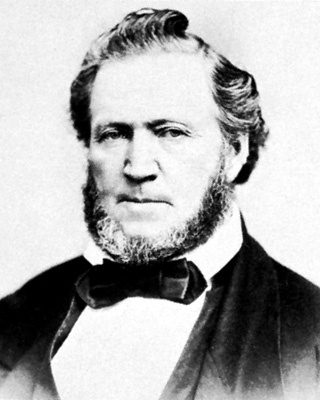 Brigham Young
Brigham Young
 Emma Smith with son David
Emma Smith with son DavidAfter Young made his comments on March 9, 1845, he did not call a meeting to inform the women, did not speak to them on the matter the following month in general conference (though he did speak directly to women at that time and at other times from the stand), and did not write to the women as he did in other circumstances. His words may have been intended to make clear his opposition to Emma’s leadership to the men present in these meetings. Emma, after all, did not support Young’s leadership and preferred William Marks as the Trustee in Trust of the Church. After Young assumed leadership of the Church as President of the Quorum of the Twelve, Emma no longer participated in the Anointed Quorum, did not perform ordinances in the Nauvoo Temple, and did not go west with the Saints. Young and Emma clashed over many issues, and as historian Benjamin Park suggested, “If Young could not directly attack the widow of Mormonism’s prophet, he could at least attack her institution, the Relief Society.”[5]
If the Relief Society was not meeting but was also not formally disbanded as an ecclesiastical organization, what were women doing in Nauvoo? How did they engage with institutional power? How did they shape the direction of the Church and the succession of Church leadership? There is more work that needs to be done in this area. Women are largely left out of the narratives of the Succession Crisis, which is rhetorical shorthand to discuss the months and years after Joseph’s death and the claims of various men to lead the Church. As historian Robin Jensen has argued, the term “Succession Crisis” has the potential to obscure history and detract from understanding the experience of church members at that time.
I coined the term “Shadow Succession Crisis” to provide a lens to excavate the women from the records and integrate them into the Succession Crisis narratives that have previously almost exclusively focused on the words and actions of men. This lens allows us to more fully analyze women’s use of agency when engaging with institutional power. The Shadow Succession Crisis is more broadly about women’s attempts to navigate paths of ritual and ecclesiastical influence and not about the Relief Society alone. However, Relief Society women who supported Young and the Twelve had to break with Emma as their ecclesiastical leader, even if some women maintained a personal relationship with her. Aspects of the Shadow Succession Crisis can be seen in records of post-martyrdom plural marriages of Joseph and Hyrum’s widows, new female initiations into the Anointed Quorum, women’s leadership in the Nauvoo Temple, and in the case of Eliza R. Snow, publishing poetry in support of Young and taking the records of the Relief Society with her across the plains.
There are consequences to the history of the Church and the Relief Society when scholars accept the claim that Young disbanded the Relief Society. They tend to discuss the work the women did in the proceeding years as “informal,” meant to comfort and support one another, and may miss the opportunity to analyze how the women interacted with and shaped institutional power. When Young’s words to an all-male audience are centered over the records and experiences of women, the role of women in the restoration tradition becomes contingent upon the shifting emotions of the man with the most power. Restoring the actions and words of women to the center of their experience allows for a fuller, more complete, and balanced history.
[1] One of the main sources for my talk on Utah Women’s suffrage was the book Thinking Women: A Timeline of Suffrage in Utah by Katherine Kitterman and Rebekah Ryan Clark.
[2] Brigham Young, Discourse, March 9, 1845 (excerpt); Record of Seventies, Book B, 1844-1848, pp. 7-78. Church History Library (CR 3 51). https://content.ldschurch.org/bc/cont... (accessed April 22, 2021).
[3] Brigham Young, Discourse, March 9, 1845 (excerpt); High Priests Quorum record, 1844-1845; Church History Library (CR 1000 1), https://catalog.churchofjesuschrist.o... (accessed April 22, 2021).
[4] First Fifty Years, Relief Society Minute Book, March 16, 1844, 131.
[5] Park, Kingdom of Nauvoo, 260.
November 1, 2022
This Is My Karma

The Peace Pagoda, Pokhara, Nepal. Photo by Mike Hansen
We traveled to Nepal and Bhutan last month. We were on a guided tour with 9 people. This tour emphasized the cultural and historic sites and experiences of Buddhism, as well as highlights of Nepalese and Bhutanese history and culture.
It was a deeply rich experience.
Our Nepalese guide, Sanjay shared his lifelong journey in Buddhism, generously including some of his “dark night of the soul” experiences, and the ongoing seeking to deepen his understanding and be led by inspiration. Through it all, there were echoes of the Mormon experience – my own and that of so many others have shared with me.
When I removed my shoes to enter the various Buddhist temples, I thought of the sacred spaces in my Mormon experience. I thought of the way these are set apart, and how I prepare and set myself apart from regular life by changing clothing that is only for this separate space of ritual.
Each time I knelt before a Buddhist monk to receive his blessing, I would bow my head so he could put a khada scarf around my neck. This scarf is a symbol of the blessing ritual, and it can be an object that can vicariously carry the blessing to loved ones for whom I pray – loved ones who are carrying heavy loads, who are in need of healing. With each experience of blessing ritual, I thought of a lifetime of practicing vicarious work. Each time I think of, pray for, or carry a name of someone through ritual, I have a glimpse of Christ’s loving act of At-one-ment. An act of compassion so consuming, he became one with each of us, experiencing all things with us from a place of love. The highest level of vicarious work is his final call to us – “Inasmuch as ye have done it unto the least of these, ye have done it unto me”. Connection to all beings, beyond the limits of time and distance, is a shared teaching in both the gospel of Christ and Dharma.
And, the constant call to create good Karma inspires me just as the call to powerfully own and create my path continues to inspire me.
Early in our journey, we were in Pokhara.
Before sunrise, some of our group hiked up to the Peace Pagoda.

Rising Sun touches the peaks of the Annapurna Range in the Himalayas. Photo by Mike Hansen.
We watched the Annapurna Mountain Range gradually appear as the clouds shifted, and as the rising sun lit the peaks, beginning with the tallest – over 8,000 meters high.
Then we climbed to the pagoda. As we approached the sacred ground, I removed my shoes. I slowly walked up to the highest level, then circled it clockwise, thinking of and praying for a beloved friend who is in great need.
Sanjay walked barefoot on this path, chanting his mantra. He paused before each of the four depictions of events from the life of Buddha, telling each story.
I stopped at the last depiction, that of the death of Buddha. He is reclining at the end of mortal life. A person who did not like him had hosted him in her home, and intentionally fed him spoiled meat, knowing it could hurt or even kill him.
As Buddha was dying, she asked him if he had known the meat was spoiled? He said he did know.
She asked him why he had then eaten it?
He said, “That is my Karma.”
Even then, he owned his journey. Even as he acknowledged the journey, the karma of others.
I walked the holy ground, my bare feet on the smooth stones, seeking strength and healing for my dear friend.
I leaned forward and laid my forehead on the platform.
All the illness. The burden. The betrayal. The fear, the hate, the stones thrown, the rejection, the killing.
…
Forgive them.
This is my karma.
Unto the least of these.
I am with you…I am you.
The god in me sees the god in you.
I am here for my friend.
I am here for my foe.
I am here for me.
The path is steep.
My sleeve is wet with tears.
Guest Post: Trauma-Informed Relief Society Teaching
Guest Post by Amy. Human Being. Mother of Two. Deep Thinker. Granddaughter of a Philosopher..
Connecting the Dots: “Trauma”, “Informed” and “Relief Society Teacher”I have victoriously entered into/got dragged kicking and screaming into a space in my life where I have done a lot of thinking about “trauma” and “informed” and “faith and being a Mormon” while formerly holding the calling of Relief Society teacher.
The word “trauma” is used to cover the whole range of hurt that happens between people interacting with each other. The incomplete words I have for it include multi-generational, societal hurts, and acts of bullying and/or abuse on the playground or in the home. This also covers deliberate acts of control to traumatize an individual or group of people and accidental acts to traumatize an individual or group of people. Trauma is connected to control and hurt. I have learned about how I minimized the trauma I felt from past experiences, and how I caused trauma by not understanding the unexplained and unintended consequences of my actions. I know enough now about trauma to want to and make specific changes to my world view.
My new favorite word is “informed”. It’s a way to turn a description into a prescription. For example, I was in a minor car accident last year that still sets off an adrenaline reaction whenever I drive anywhere. Sometimes I drive places to help my body get used to driving again without setting off an adrenaline rush. Sometimes I reschedule driving places to make sure that I am driving in the daylight or in the best weather condition to minimize my body’s reaction. In any case, the description is “heightened anxiety during driving” and the prescription is tailored to/informed by changing my decisions where/when I drive to what is the best balance I can make. So, I am a “Post Car-Accident Informed Driver”.
Most people do not connect trauma or trauma-informed with their callings at church. We don’t talk about trauma at church. However, when it comes up, it comes up as a “leadership concern” for the Bishop (representing the Elders group), the Relief Society President, the Primary President, or the YM/YW Presidents.
On a person-to -person level, D&C 121 is recited as a mantra against unrighteous dominion/control/abuse with some very general, very subjective guidelines on how to deal with those traumatized by individuals who experienced unrighteous dominion/control/abuse. On a historical organizational level, the conversation is about fleeing Nauvoo and the complex relationship the LDS church had with the federal government.
Chieko Okazaki was a pioneer in the area of leadership talking specifically about trauma at church. All of her talks are designed to do this – to create space for everyone in a diverse, non-traumatic, calming way. She talked about abuse in families and took seriously that there were sisters in her care that were being abused. She spoke of hard choices, especially inviting the Savior into those hard spaces. She spoke of balance, of preserving mental health while serving others.
By learning more about trauma, I learned more about how I was accidentally causing trauma, and not taking into account the probable traumas of others around me in my calling as a Relief Society teacher.
 Photo by Rosie Sun on UnsplashI Didn’t Know What I Thought I Knew
Photo by Rosie Sun on UnsplashI Didn’t Know What I Thought I KnewMy default assumptions was that every sister in Relief Society – every sister in that meeting was safe and was a believer in Jesus Christ and that we were on the same “covenant path”, that most of their problems came from depression, unwise choices like substance abuse in regards to family members or general living. Everything else wasn’t really talked about, and minimized as misunderstandings. Even with a family history of wide-spread substance abuse and other abuses, and chronic major depression, I didn’t get it.
I. Was. So. Wrong.
The advocacy group National Alliance on Mental Illness (NAMI) reports that “1 in 5 adults” experience mental health issues – and “1 in 20 adults” is experiencing a serious mental health challenge. Also, 19% of those individuals are dealing with Anxiety Disorders. So, when I was teaching Relief Society with 20 sisters in the room, at least 3 of them (besides me) were dealing with mental health stuff at that point in time and 1 of them was likely in serious trouble. Since I was the one with the anxiety, they might have been spared that at least.
We understand now that intimate partner violence is about power and control. The National Coalition against Domestic Violence reports these statistics: 1 in 3 women or 1 in 4 women (with a greater percent of these sisters being between the age of 18 and 24 years of age) have experienced some form of physical violence that may lead to Post-Traumatic Stress Disorder. Of my 20 sisters in Relief Society, 6-7 of them had lived this experience on some level, and 5 of those sisters carry trauma from it into my teaching space. These 6-7 sisters may or may not be the 1- 5 adults mentioned as having mental health challenges.
When I was a trauma-informed Relief Society teacher, my default assumption that the sisters were safe changed to understand that there were sisters who weren’t safe – there was a lot going on in the lives of these sisters. That some of it involved mental health and was connected directly or indirectly to power and control and worth on fundamental levels.
My job as their teacher was to provide a 35-40 minute lesson that spiritually uplifted them and prepared them for the week. I could not do my job without taking into account that the basic need for safety and security” for those 6 to 12 sisters experiencing mental challenges and trauma from abuse became part of the framework of my lesson. My charge as a Relief Society teacher meant creating expansive safe spaces for mental, emotional, and faith topics, and to avoid putting more pressure, more guilt, and more shame on these precious sisters.
I was also creating a safe space for me. I was going through my faith transition and I needed to make space for myself in the room as their teacher. An equally valuable side benefit was forcefully learning that everyone, including me, was on their own faith journey, and that what I was doing for me was helpful for other sisters too. Some of the things that were hurtful/thought-provoking for me were things that I figured were hurtful for them, and we could shift the conversation away from those topics sometimes and/or mourn and comfort each other together. There were believing sisters who made connective statements, who talked about faith in ways that I could not. We leaned on each other to create a divine patch of space and time.
 Photo by Hannah Busing on UnsplashThe ProcessStart with The Easy Circumstances
Photo by Hannah Busing on UnsplashThe ProcessStart with The Easy CircumstancesStart with the general needs, the easy circumstances in getting an understanding of the general demographics of an area, the standard get-to-know-you routine. Also, other sources of information can be used to get a sense of who’s married (or not), how many kid(s) a sister has, what kinds of employment and education levels the sisters have obtained, who is related to whom in the community, how long they have lived there, and their conversion story.
Be Informed About Unknown Circumstances Among the SistersIt’s harder to create a space for the unknown circumstances; we won’t necessarily know which sisters have been traumatized, experienced abuse, been neglected or abandoned, are in a faith transition of some sort, or experienced mental health challenges. We won’t know which sisters are thinking about their orientation in a different way. We won’t necessarily know which sisters are struggling to find their worth in the cultural identity of “sister”. But we don’t have to know this in creating space for their circumstances – we can trust that the circumstance is there and become informed in ways to help them in a general sense.
In the case of mental health challenges and abuse, the numbers speak for themselves in suggesting that becoming more trauma-informed in our lives and in our callings will connect us to each other in valuable, relationship-building ways.
 Photo by Gemma Chua-Tran on UnsplashDevelopmental Process and “The Best Laid Plans”
Photo by Gemma Chua-Tran on UnsplashDevelopmental Process and “The Best Laid Plans”It took years of education, counseling, professional consults to accurately create prescriptions and accommodations for different aspects of my life. I learned from firsthand experience that research, thinking, sitting with and then implementing a potential solution or accommodation is a process I worked on over and over again. It was a safe assumption that other sisters in the room were doing a similar process.
The most important part of my role was creating an environment for connections, facilitating conversations with sisters so they could teach each other in a positive way and encouraging individuals to ask themselves questions to figure out what they needed most to empower and motivate themselves in a direction that they felt God was pulling them.
I discovered that there is a simple, but complex paradox at work here. We were different, but we were the same. The more diverse the experience and process, the more it is speaking to a universal connection point. I could be solving my problems through developing a habit to wear sunglasses and drink more water to be comfortable – and the sister next to me was developing the habit of bringing colored pens and a notepad to class to be more comfortable with retaining information. We described a problem we were trying to solve and shared our prescriptions with each other. At its core, to be human is to be problem-solving and surviving challenging situations with as much grace as possible. I paid less attention to the “1 way of doing things” and championed finding a sustainable way of doing something.
October 30, 2022
Guest Post: Guardian of a Lifetime of Memories
Guest post by Amy. Human Being. Mother of Two. Deep Thinker. Granddaughter of a Philosopher.
Dearest Memory-Holder,
Alas, I take you so much for granted. I trust in your ever-expanding depths, the opportunity to stash one more cord, one more box of Kleenex, or one more bag of clothes. You bear it all in silence, dignity, and with security. The masterly way you conceal out-of-season items inspires me. You never complain about my morning or evening pilgrimage to rifle through your wares in hope for a better tomorrow. It makes no difference to you whether a vacuum cleaner, dusty ceiling fan, unwrapped Christmas presents, assorted outgrown baby socks, or antique school papers find their way inside you. You rarely fuss when speakers get wedged inside any which way (which happens to the best of your kind, I am afraid).
The first time we met, I opened the door to peer inside your forlorn, empty interior. With my critical eye, I examined your dimensions. I almost declared you too small on the spot, not worthy of a second look. I did not pronounce that final judgment because I was not looking for myself, but for my children. I saw that you were a most worthy guardian of their treasures. I had a comforting vision of toy-filled baskets on the floor underneath a flurry of pastel, girly fabrics neatly lined up and suspended in space above the baskets. You made that vision a form of reality, by cherishing the horrid almost-glow-in-the-dark-pink dresses favored by my daughter. You bore the mud-encrusted mismatched shoes sprawled every which way in your recesses gracefully. I still grin at the memory of our new cat seeking refuge inside you. He cocooned himself in the dark recesses of a corner to get away from the noise and chaos that is my family. There are days (weeks, months) when I want to cocoon myself in your sanctuary also.
In time, I replaced my daughter’s shockingly vivid dresses, shoes, discarded papers and old candy wrappers with items of my own. I mourned for your ill treatment at her hand and resolved to treat you better. I restored you to your former glory by wiping out dust and cobwebs, paint flakes and unidentified stuff that littered your surfaces. At least twice a year since then, we meet to commune for several hours at a stretch with the lofty goal of redefining and refining my life. You are there with me reviewing lots of memories while I clear out all the items and look at them in the light of day. Some items are restored to your depths, being declared worthy of your sacred care, while others are rejected as trash or resigned to other spaces. I consign countless items to the garage to free you from undue stress. My intense respect has grown from admiration and appreciation into a need to have you at your best. We work together to catalog and improve civilization as we know it.
Just recently, it was time for the annual pilgrimage, and I came to an understanding that I had never had before. You truly are enough – you are more than enough for me. I had never realized that the space that is there is truly sufficient for me and my life. I look forward to continuing to work together in tandem to restore order to my life through corralling all objects stored within you. I boast about completing the most recent restoration process to my friends and family.
 Photo by Dilan Ortega on Unsplash
Photo by Dilan Ortega on UnsplashAs a token of my affection, I resolve to guard you better from the callous members of my family who would willy-nilly stash their stuff within you because it is “convenient” or because they can. I will continue to improve the quality of the items you hold, and find less painful ways to contain assorted objects. I will place items inside you carefully and properly, instead of blindly shoving something in and praying that it doesn’t avalanche out on top of me. I look forward to the day when I can evict my husband’s extensive cord collection from your domain. I am hopeful that there will be a day when everything that resides within you is strictly mine, instead of just held in trust by me. How I love you, my closet…
October 28, 2022
Temple Matron: No Husband Required
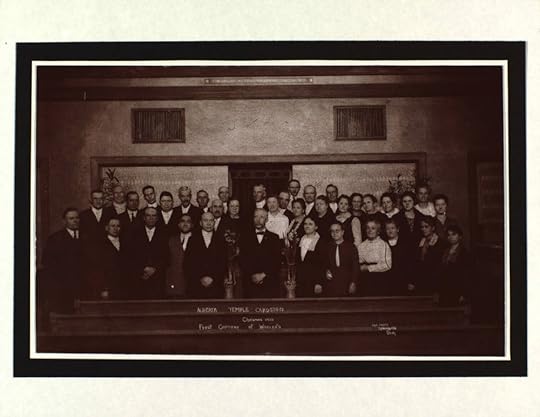 Alberta Temple, Cardston, Christmas 1923, First Company of Workers (Armenia Lee is 6th from the right, bottom row); Source
Alberta Temple, Cardston, Christmas 1923, First Company of Workers (Armenia Lee is 6th from the right, bottom row); SourceI was working my way through Saints, Volume 3 when I stumbled across this bombshell in Chapter 15: “…Armenia Lee had an interview with apostle George F. Richards and her longtime stake president, Edward J. Wood, who had been called as the president of the new temple. Armenia and Edward had been friends for many years. After her husband’s death, she had often gone to him for counsel and advice. They had worked together as stake leaders, and Edward had become like a brother to her. Once the meeting began, Elder Richards asked Armenia if she would be willing to serve as matron of the new temple…Armenia was at once dazed and honored by the call. “I will accept the position in all humility, and do my best,” she said.”
I had to reread the section a few times to confirm I didn’t misunderstand. An unmarried widow was called to be the Temple Matron to serve alongside her friend, the Temple President! Who was not her husband! In 1923! This meant two things that very much excited me:
1) Armenia Lee was identified and called to be a Temple Matron not because of who she happened to be married to but rather because of her own unique talents and abilities. So many women (including temple matrons and other wives of high-ranking male leaders in the Church today) seem to be elevated solely because of proximity to their husbands. It is so often the men who receive the true leadership calling and responsibilities, and the wives are along for the ride. Wives are frequently seen as a benefit or detriment to their husbands’ spiritual leadership rather than people capable of spiritual leadership in their own right.
2) An unmarried widow and a married stake president were called to serve side by side as Temple President and Temple Matron. This is a refreshing alternative to the tired, sexist narrative that men and women who are not married to each other cannot be friends or colleagues or spiritual leaders at the same time due to impropriety – as if the only thing standing between good, loyal people and rampant infidelity or fornication is mere exposure to the opposite sex.
Before receiving the call to serve as Temple Matron, Armenia Lee already had a record of extraordinary service in the leadership of the Young Women’s Mutual Improvement Association and her Stake Young Women Presidency. She was also a sought-after writer and speaker on spiritual matters. At the same time, as a widow with five children from her first marriage, she made it clear even when she was extended the call to serve as Temple Matron that she had to work to support her family – without apologizing or rejecting the call. She was single when she began but continued to serve as Matron even after remarrying in 1936.
I was pleasantly surprised to see a woman and a man, friends, serving together in official Temple leadership roles in 1923. One need look no further than controversies that go right up to the present day to see that we cannot take such open-mindedness for granted. The outdated philosophy that continues to prevent such platonic or professional partnerships became a subject of popular debate in the United States in 2017 when media covered what became known as the “Mike Pence rule” because the then-Vice President maintained a policy of refusing to eat alone with a woman or attend an event with alcohol without his wife. Many conservative Christian men including members of the Church of Jesus Christ of Latter-day Saints (LDS) brag about such practices (also known as the “Billy Graham rule”) as a way of publicly performing an image of faithfulness to their wives and resistance to sexual temptation.
Some LDS folks extrapolate that this is another reason to keep women out of leadership positions in general. For example, I’ve heard some make the argument that you could never have women or gender minorities in a Sunday School Presidency (even though Sunday School isn’t gendered) because it would be inappropriate for men in Sunday School leadership to work so closely in their callings with anyone except other men. The participants might be attracted to each other, tempted beyond what they can bear, and before you know it everyone is having emotional and sexual affairs left and right! Or so the logic goes.
Besides the fact that this view undermines our own doctrine of sacred individual agency and infantilizes grown, accountable adults who should have figured out how to control their own urges and behavior, its logical conclusion is that all aspects of life should be gender-segregated. Introduce diversity in sexual orientation and even the premise falls apart. Although this entire approach crumbles at even the slightest prodding of intellectual critique or practical implications, it continues to appeal to many, including members of the LDS Church who seek to defend an unjust and inequitable status quo.
I checked the historical list of presidents and matrons of the Cardston Alberta Temple where Armenia Lee served as the first Matron. She was succeeded by another woman, Jennie Leavitt Smith, who was not married to the Temple President when called but who was married to another man, Willard Lisbon Smith. Nevertheless, from 1948 to the present day, only husband-wife pairs have served in those roles. It appears my home Temple in Washington, DC has never had anyone other than a husband-wife pair as President and Matron. I wonder how many other instances (if any) in our history include women like Armenia Lee and Jennie Leavitt Smith in Temple leadership independent of their marriage to a Temple President?
I already knew from good sense, personal revelation, life experience, and simple logic that there is no reason we cannot call a woman directly, independent of her marriage to a particular man, to an office such as Temple Matron. But thanks to Armenia Lee and Jennie Leavitt Smith, I now know that it is not only possible but has in fact already happened. What changed? Why does it seem so impossible now, when it existed in the 1920s? Let’s expand our conceptions beyond the way things currently are to what they could be, if only we would notice the outstanding potential people around us have – irrespective of their marriage to a notable man.
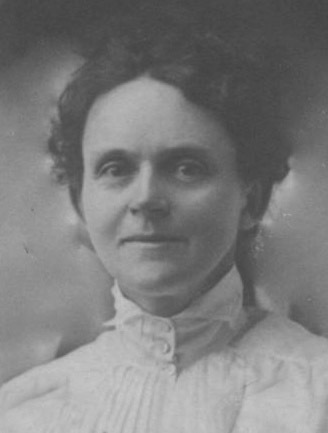 Armenia Lee; Source
Armenia Lee; Source
October 27, 2022
Guest Post: Parts at the Table Love Letter
Guest Post by Anonymous. Anonymous is a caregiver, philosopher, child development apprentice, writer, and organizer. This post has been inspired by LMA’s A Sampler of Life Right Now. LMA – Thank you!

I didn’t know what I was looking for,
I didn’t know what was missing.
I didn’t know who was missing – and that
Is far more important.
I knew generally about “parts”
and “kids” and “naptime”
and “nests”
Having designed many
Over time.
I knew about “safety”
And “rest” and
The sensation of “soft”
And bundles of people
Limbs woven together in hugs
Like slumbering puppies on a
Sun-drenched comfortable rug.
When I connected all those dots,
And realized I had “parts” to gather,
Tears and sobs ran down my face,
As the pieces fell into place.
Those parts of me
That unknowingly ran my existence-
Found themselves.
Found Peace.
My “child” got escorted back
From the safety of the “children’s table”
Into the grand conference –
Into my “Round Table” borrowed from
St. Arthur and his knights.
And now, I can minister to my children



